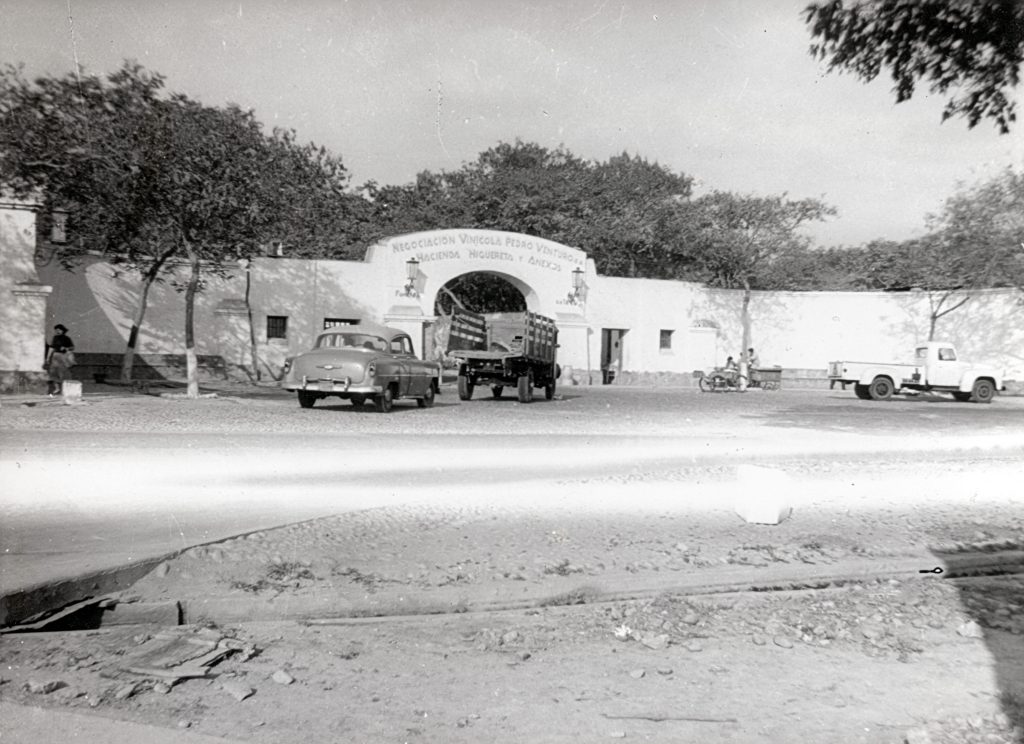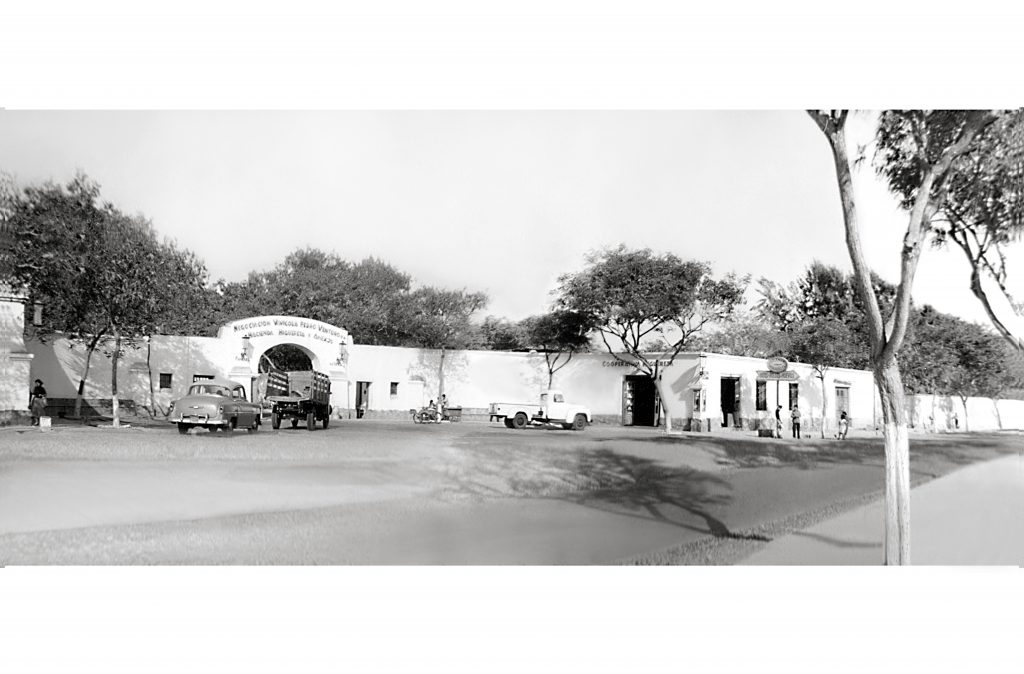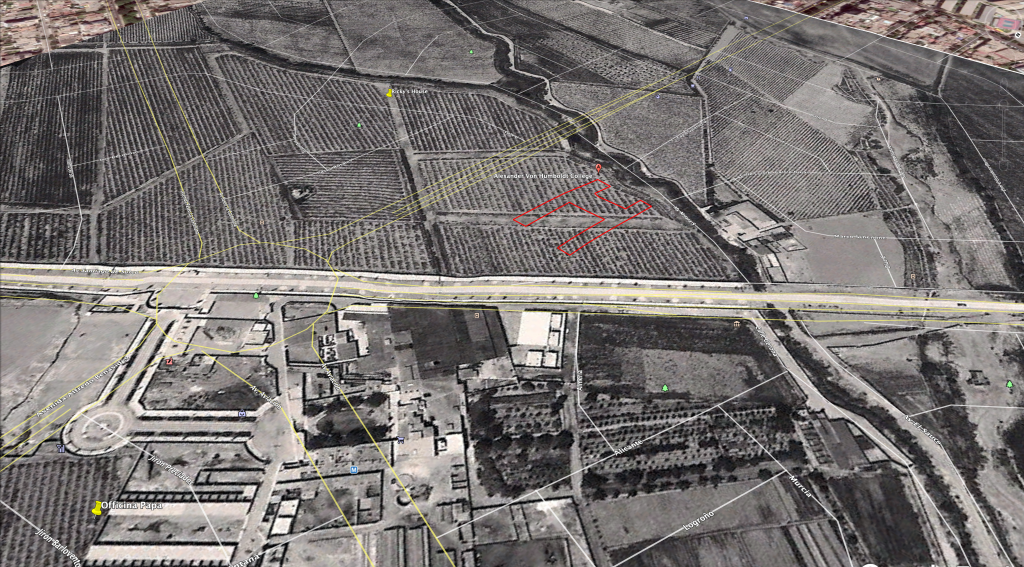Hacienda Higuereta Residents and Employees
Pedro Venturo Toledo – Founder (1896)
Pedro Venturo Zapata – President/Owner/Administrator from 1925 to 1952.
Rodolfo Venturo – Owner from 1952 to 1960
Augusto Badani Chávez – Agricultural Engineer/Resident from 1954-1966.
Jose Cahua – Blacksmith/Carpenter/Resident in the Late 50’s & 60’s.
Bernardo Badani – Engineer/Resident from 1954-1966.
Emilia de Cahua – Storefront vendor/Resident in the late 50’s & 60’s.
Alejandro Chang – Butcher “Tienda Cooperativa” Storefront in the 1950’s.
Maria Zoraida “Zora” Bravo Ratto – School Teacher in the 1940’s & 50’s.
Carlos Chang – Storefront Vendor in the 1950’s.
Elias Santiago Yupanqui – Employee/Resident.
Flor de Maria Chang de Romero – Resident in the 1950’s.
Isabello Victorio Vera – Resident in the 1950’s.
Jorge Caceres – Resident in the 1960’s.
Daniel Canchis Cahua – Born in the Hacienda.
Abraham Rosas – Resident (25 years)
Alejandro Cisneros Raymundez – Resident.
Jesus Tarazona – Resident.
Carlos Chang Cahuayoya – Resident.
Aerial Views of the Hacienda Higuereta before it was demolished.
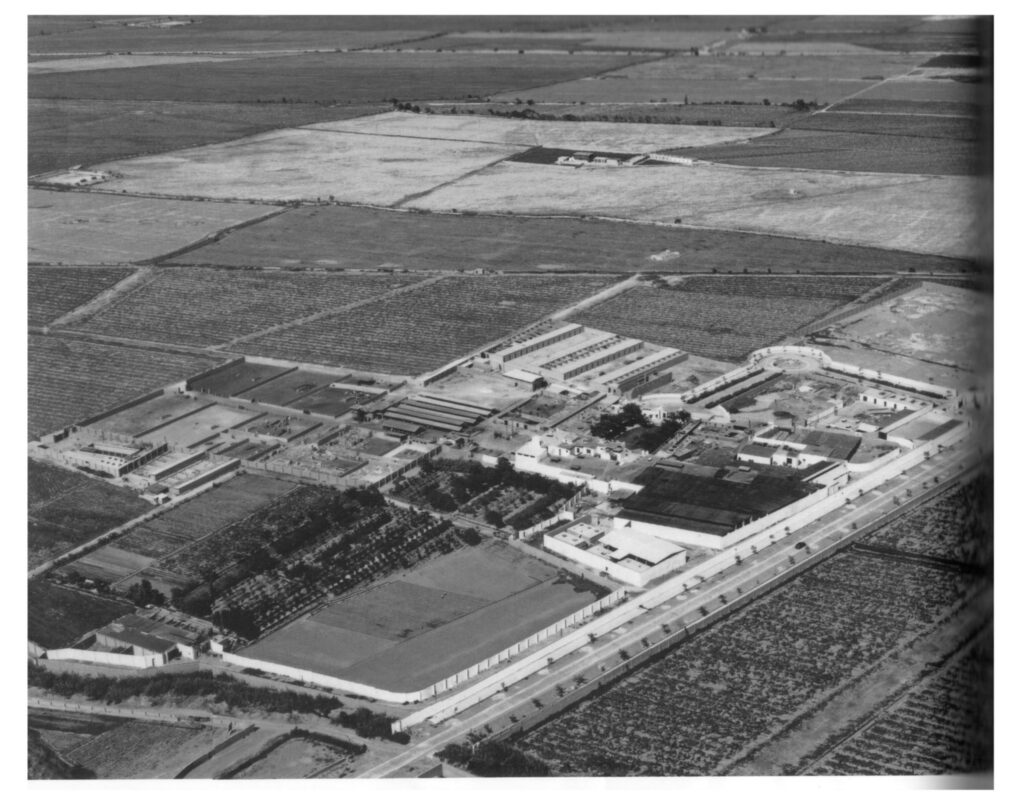
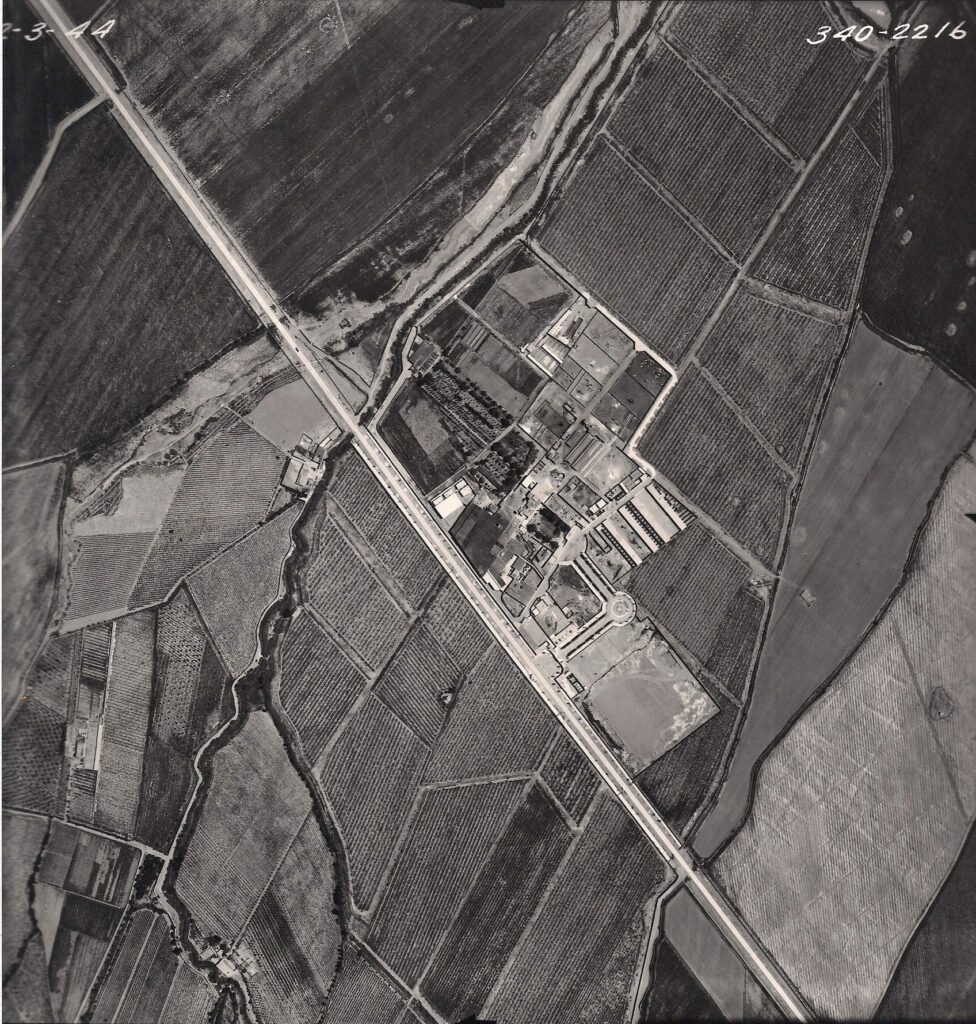
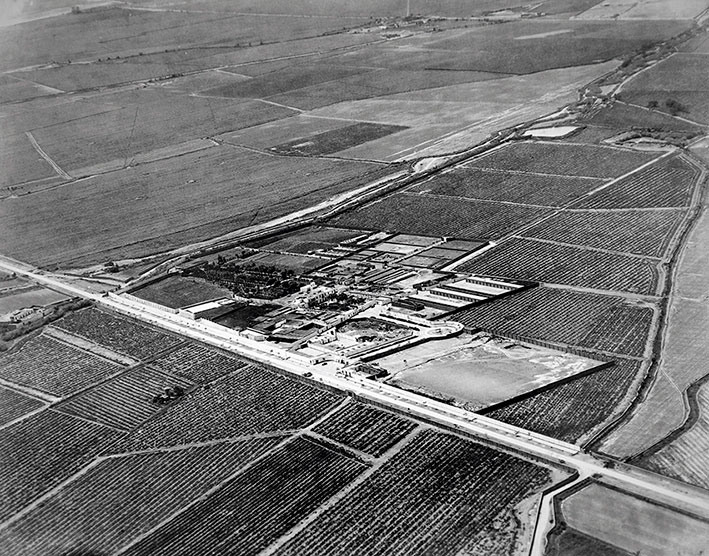

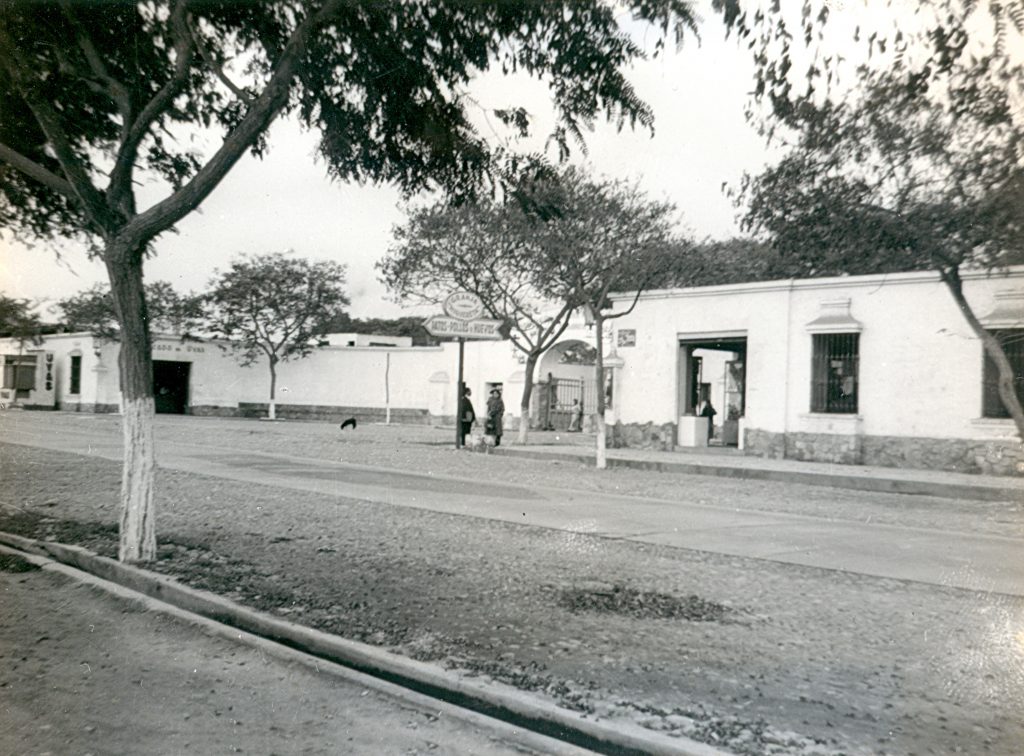
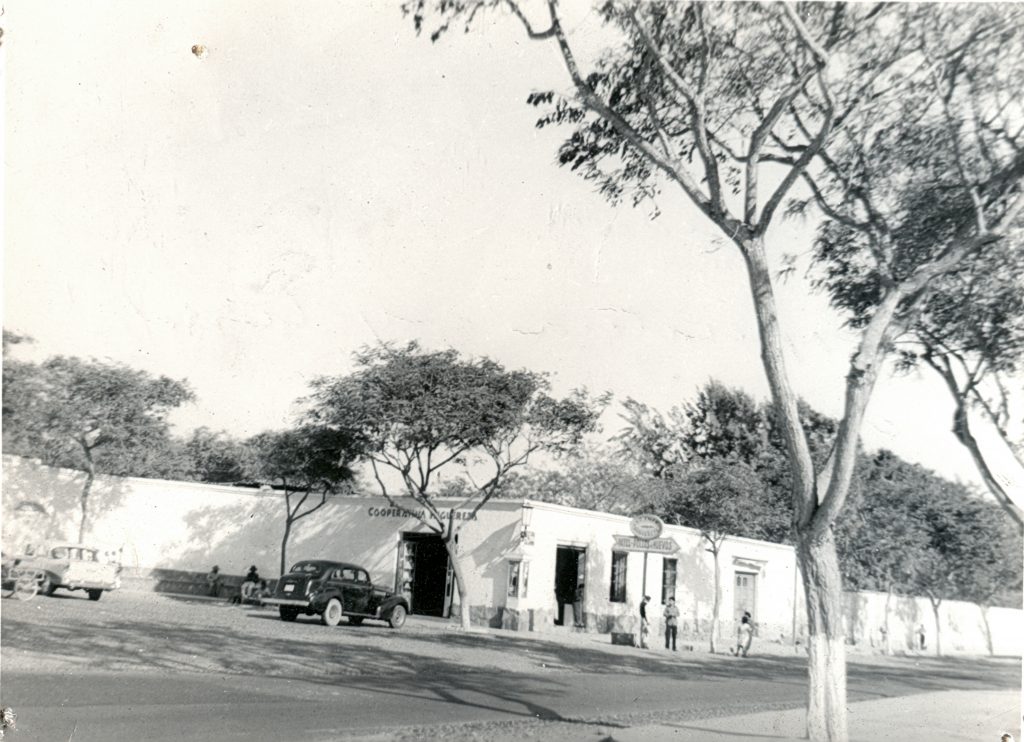
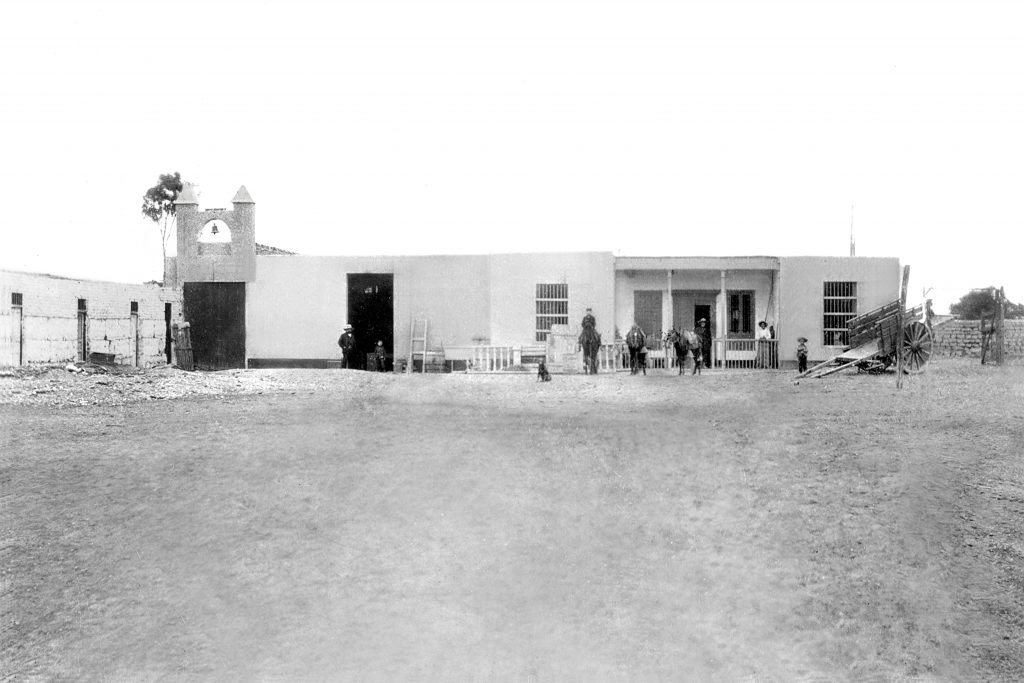
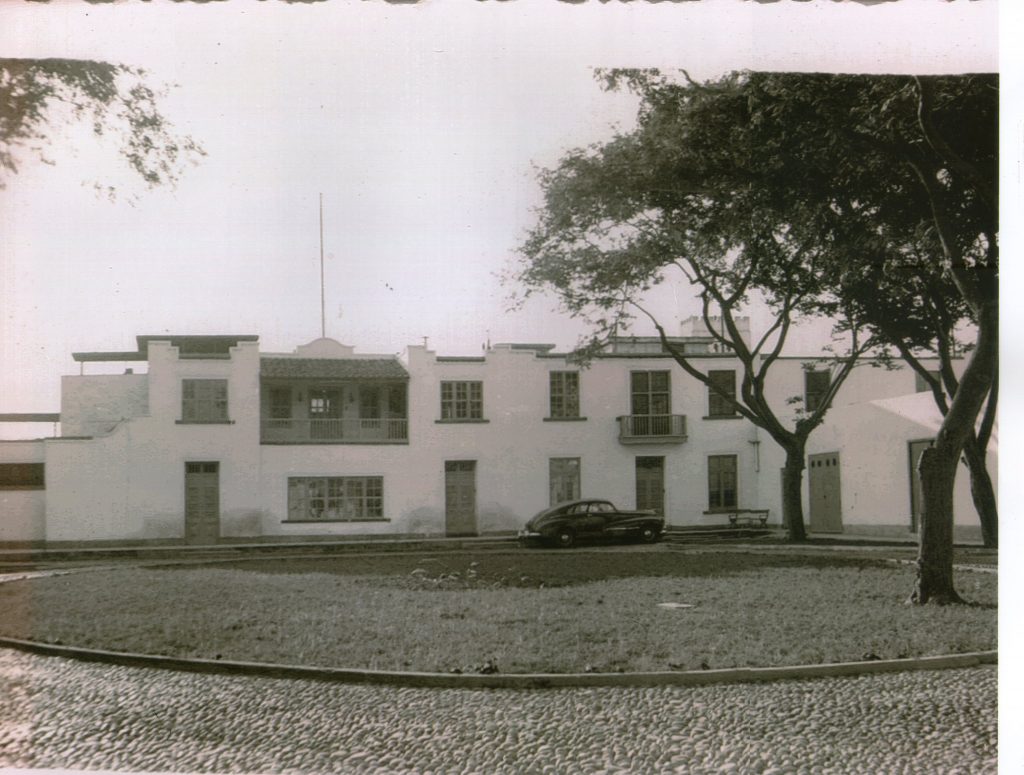
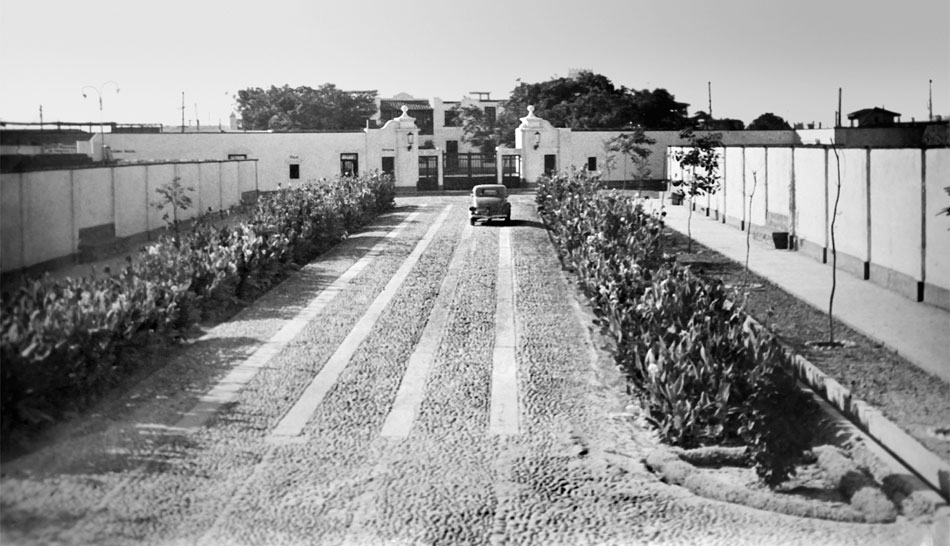
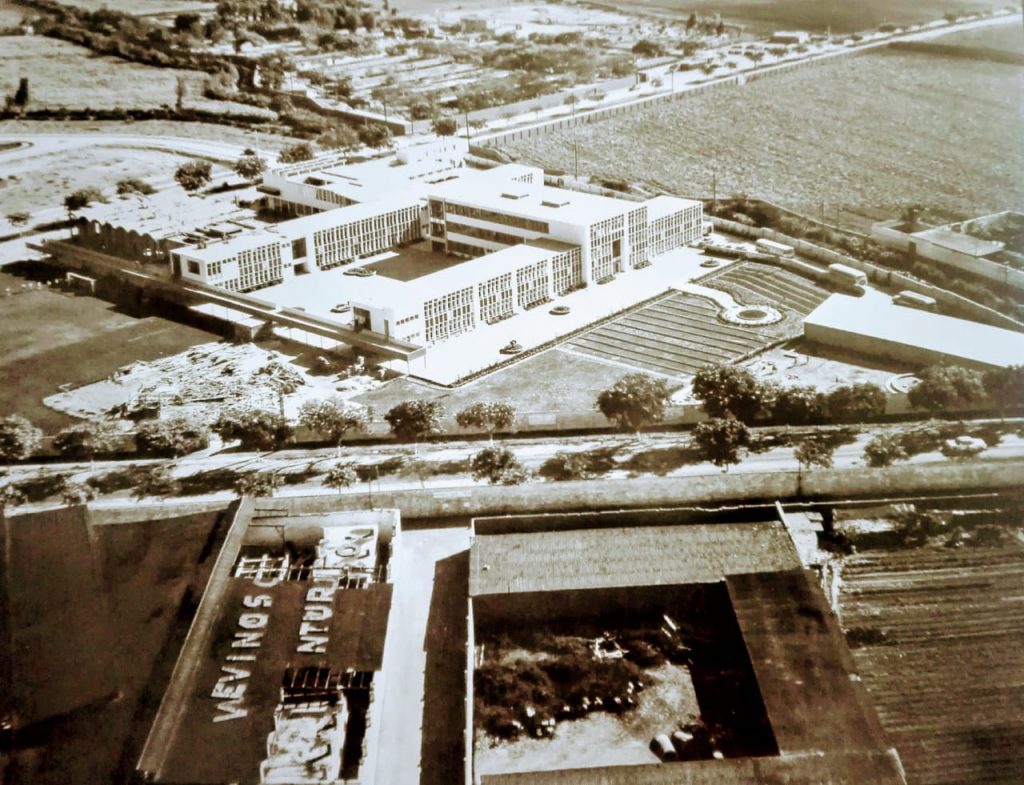
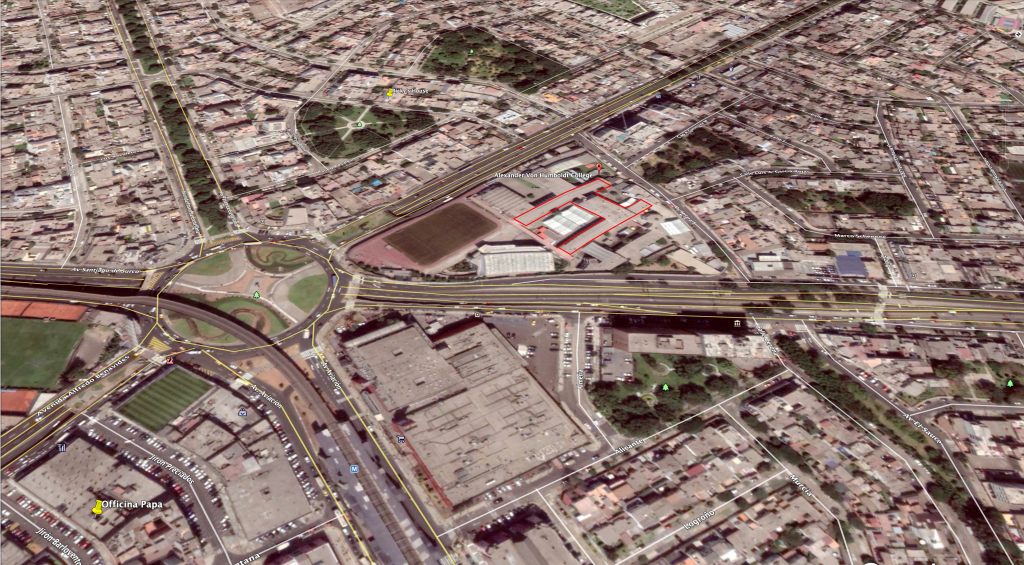
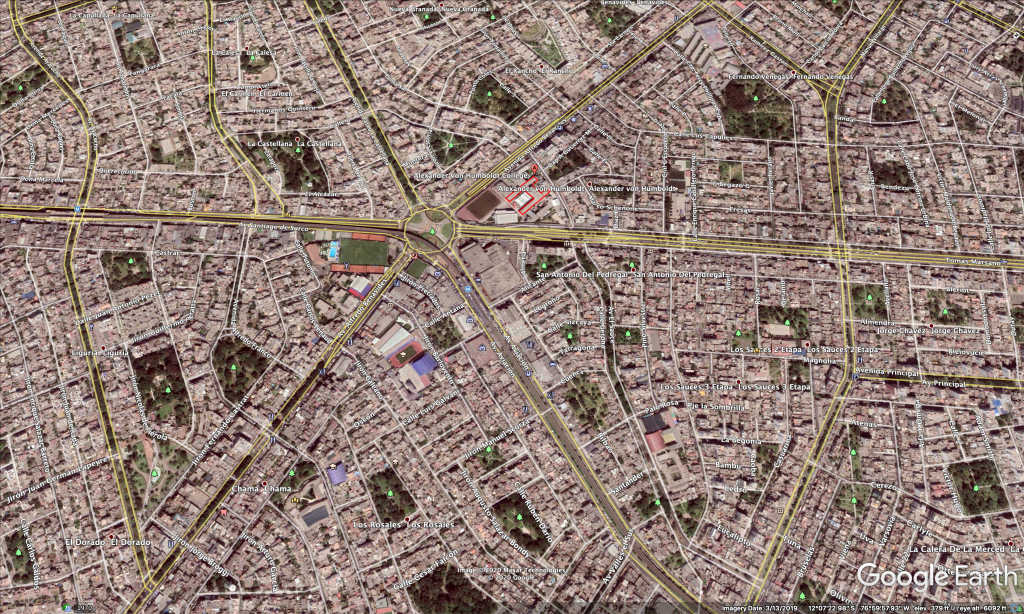
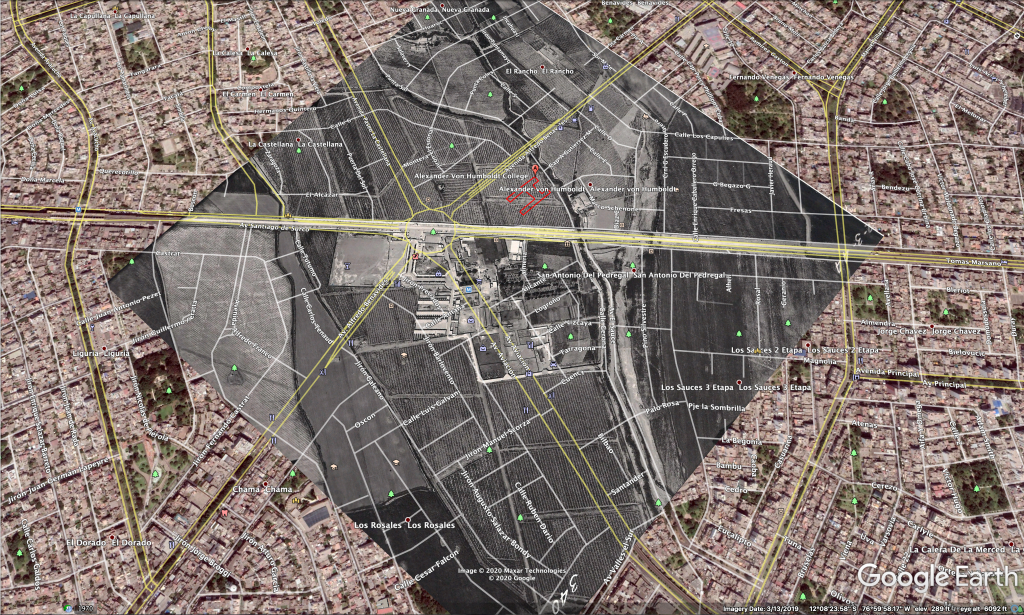
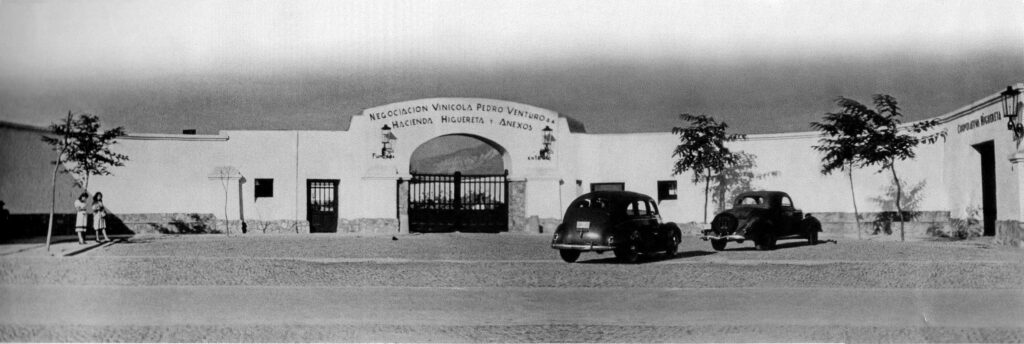

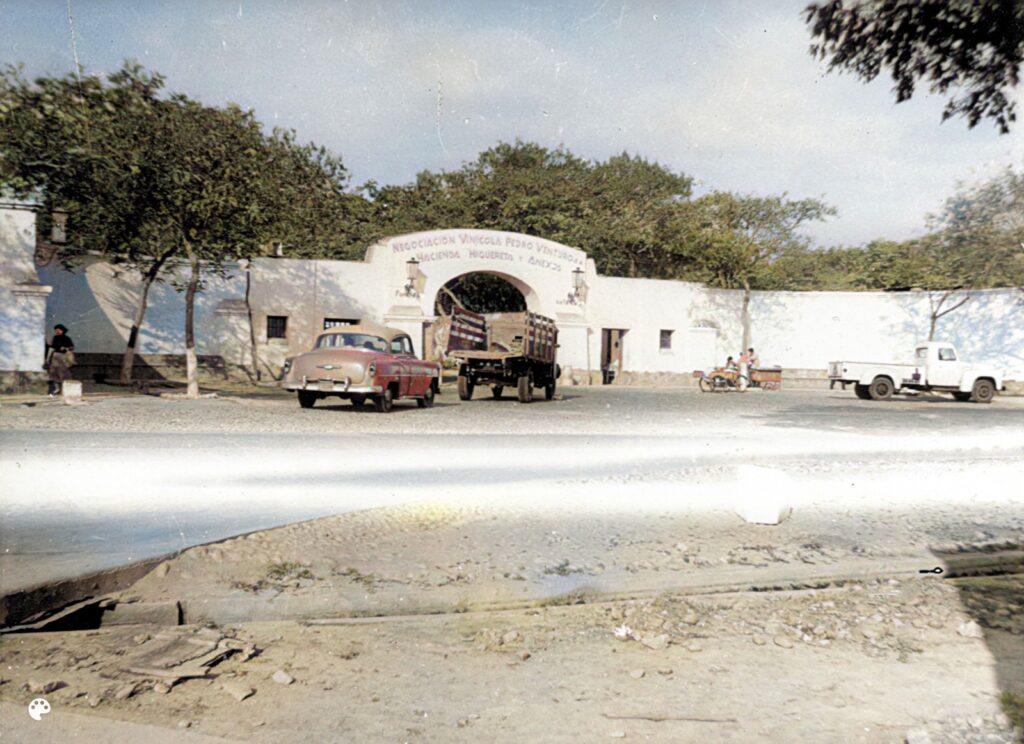
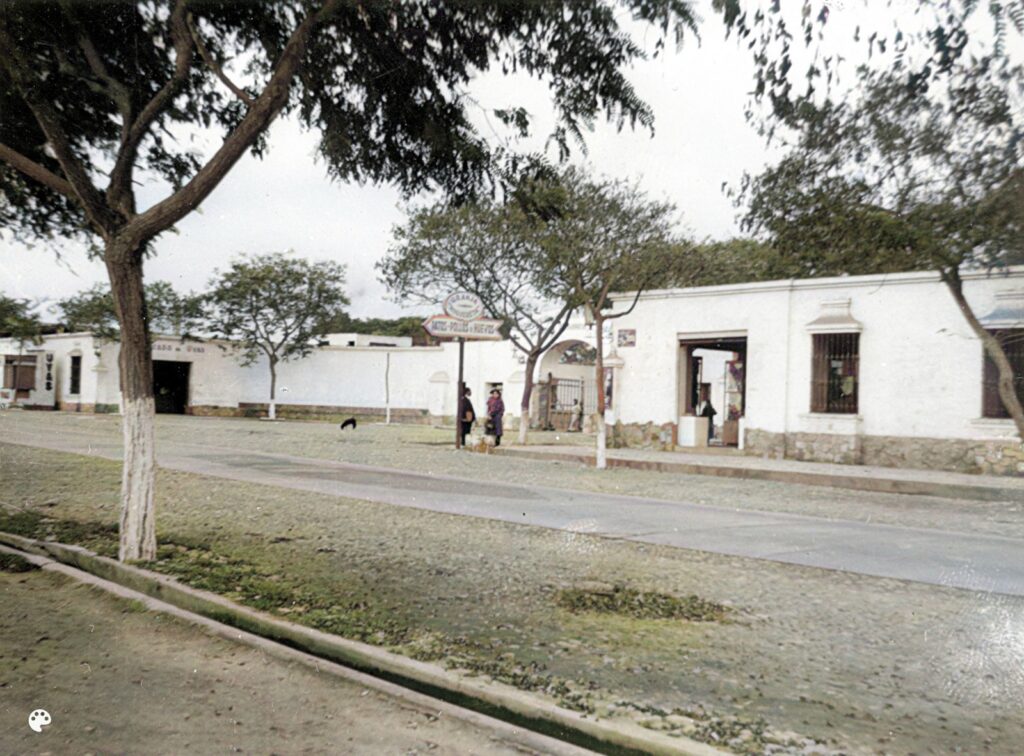
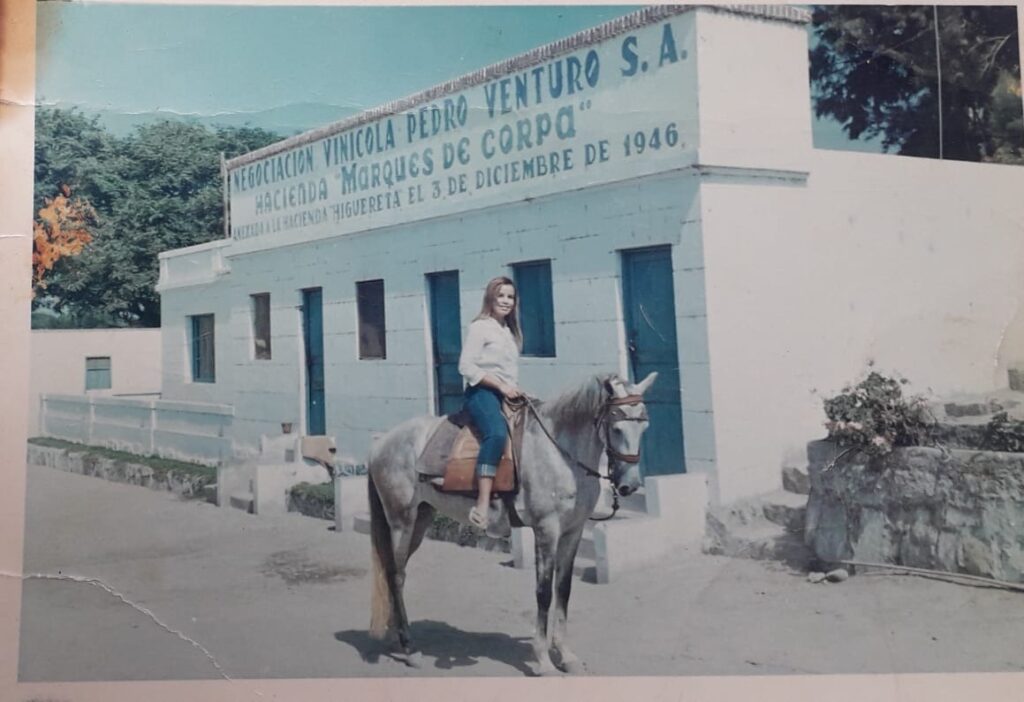
“Malagueña” being ridden by Margot Markoch Bacigalupi circa 1965-1968 at the Hacienda “Marques Se Corpa” A hacienda Higuereta Anexo.
Resident’s testimony translated to English…
The Enginieer Barnardo Badani lived at the hacienda Higuereta from 1954 to 1966. His father was The Agricultural Engineer Augusto Badani Chávez who was the superintendent at the Hacienda Higuereta at the time.
These are his memories of the hacienda…
I lived in the Hacienda Higuereta between, more or less, 1954 and 1966. My old man, the agricultural engineer Augusto Badani Chávez, was the Superintendent of the Pedro Venturo Wine Corporation, (“NEGOCIACION VINICOLA PEDRO VENTURO S.A. HACIENDA HIGUERETA Y ANEXOS”) which included that hacienda, one in Villa (part became the Country Club Villa) and some wineries in the mountains whose name I do not remember (CASAPALCA) to age the best wines.
The hacienda house was part of a complex of buildings surrounding an internal garden in the area of trusted employees. Actually, they were two houses together wall to wall that, looking at it (s) from the front, showed on the right hand side (next to the entrance to the stables) the owner’s house (the owner in those years was Rodolfo Venturo, mayor of Surco and son of Pedro Venturo, and one of his own children – Pedro’s grandson – lived there) and on his left side, and of the same design, the house of the Superintendent of the Corporation (where we lived). Both houses had a large covered balcony and were two stories but with only the top floor dedicated to being used as a room since the entire bottom was really part of the warehouse complex apart from a small office on the “first floor” of my home. To the left of the Superintendent’s house was a loading and unloading yard for the trucks that came to the warehouses, which, as I mentioned, were fully integrated wall to wall with the rest of the double house of the owner and the administrator. On the flanks, on one level, and also wall to wall, were the houses of the other trusted employees (winemaker, accountant, and one or two others), a chapel, and the offices and telephone exchange.
I cannot confirm whether the construction dated to the founding of the hacienda or not, but it was considered very old. And I am inclined to think that the chapel was as much or older, with very thick walls if memory serves me correctly. A nice detail: absolutely all the walls were white and all the doors, windows, gates, etc., in “venturo blue” color (at least that’s what we called it at home because there was no variation. Something seems to remind me that the owner at some point he bought a huge volume of paint of that color at a discount price and from there he continued to use only that blue against the white walls – but it may have been a family joke)
The agro-industrial complex included vineyards, bread production, wineries, stables (reached up to about 300 holstein cows), calves for calves, stallions (the bull was called “Churchill”), corrals for paso horses, other separate corrals for the animals in the fattening center that went to the slaughterhouse (pigs were also slaughtered in that slaughterhouse – their squeals were heard from the house), a poultry farm (chickens, turkeys and eggs), pond, stadium, rancherías, firewood depot , blacksmith shop, mechanical and carpentry workshop, public toilets, a movie theater (with even mezzanine for trusted employees) and even an elementary school, if memory serves me right. And, of course, the large wine cellars and – separate – the vinegar cellars. They produced whites (including a good “Sauterne”), reds, French-made champagne (natural carbolization and hand-turned) and vermouth (“Cinzano” award).
Just outside the first gate, but still on the hacienda grounds, there was a cooperative store (“the cooperative”) run by Chinese (with their mini chifa) and a bar. A Venturo horse won the Paso Horses Award in 1964; His name was Maranon. In the garden of the employee complex – opposite the house – and on the boulevards there were huge Tipas trees. I do not know if they are preserved (I saw an aerial photo of what I think is that place from the address you gave and I see many trees). In addition, they had taken care to brighten up the hacienda by planting many flowers, (mainly Canas), on the long tree-lined and cobbled boulevard that led from the first gate – past a couple of roundabouts – until they reached the staff and warehouse complex. (The first gate, roundabout and section of that boulevard disappeared when the Chama urbanization began by the same owners who demanded to extend the avenue that passes in front of Von Humbold to Chama. I remember that there were large signs painted on the white walls that warned: ” We admire the flowers but we don’t touch them ”.
Ing. Agrónomo Bernardo Badani, MSc.
Director of the Summits of the Americas Follow-up Office
Inter-American Institute for Cooperation on Agriculture
San Jose Costa Rica
The original testimony in Spanish…
El ingeniero Barnardo Badani leyó nuestro artículo que sobre la hacienda Higuereta publicamos en junio. Con mucha amabilidad, nos escribió y nos contó algunos de sus recuerdos porque vivió en aquella hacienda limeña entre finales de los 50 y comienzos de los 60. A continuación, reproducimos su texto:
Yo viví en la hacienda Higuereta entre, más o menos, 1954 y 1966. Mi viejo, el ingeniero agrónomo Augusto Badani Chávez, era el Superintendente de la Corporación Vitivinícola Pedro Venturo que incluía esa hacienda, una en Villa (parte se convirtió en el Country Club Villa) y unas bodegas en la sierra de cuyo nombre no me acuerdo para añejar los mejores vinos.
La casa hacienda era parte de un complejo de edificios rodeando a un jardín interior de la zona de empleados de confianza. En realidad, eran dos casas juntas pared con pared que, mirándola(s) de frente, mostraban a mano derecha (al lado de la entrada a los establos) la casa del dueño (el dueño en esos años era Rodolfo Venturo, alcalde de Surco e hijo de Pedro Venturo, y uno de sus propios hijos – nieto de Pedro – vivía allí) y a su lado izquierdo, y de igual diseño, la casa del Superintendente de la Corporación (donde vivíamos nosotros). Ambas casas tenían un amplio balcón cubierto y eran de dos pisos pero con solo el piso de arriba dedicado a usarse como habitación pues toda la parte de abajo era realmente parte del complejo de las bodegas aparte de una oficinita en el “primer piso” de mi casa. A la izquierda de la casa del Superintendente había un patio de carga y descarga de los camiones que venían a las bodegas que, como mencioné estaban totalmente integradas pared con pared con el resto de la casona doble del dueño y el administrador. En los flancos, de un solo piso, y también pared con pared, estaban las casas de los otros empleados de confianza (enólogo, contador y uno o dos más), una capilla y las oficinas y central telefónica.
No puedo confirmar si la construcción databa a la fundación de la hacienda o no, pero se consideraba muy antigua. Y me inclino a pensar que la capilla era tanto o más vieja, de muros muy gruesos si no me falla la memoria. Un detalle simpático: absolutamente todos los muros eran blancos y todas las puertas, ventanas, portones, etc., de color “azul venturo” (al menos así le decíamos en casa pues no había ninguna variación. Algo me parece recordar de que el dueño en algún momento compró un enorme volumen de pintura de ese color a precio de descuento y de allí se siguió usando solo ese azul contra los muros blancos – pero puede haber sido chiste de familia)
El complejo agroindustrial incluía viñedos, producción de pan llevar, bodegas, establos (llegó hasta cerca de las 300 vacas holstein), corrales para terneras, padrillos (el toro se llamaba “Churchill”), corrales de los caballos de paso, otros corrales separados para los animales del centro de engorde que iban luego al camal (también se sacrificaban cerdos en ese camal – se oían sus chillidos desde la casa), una granja avícola (pollos, pavos y huevos), estanque, estadio, rancherías, depósito de leña, herrería, taller de mecánica y carpintería, baños público, un cine teatro (con hasta mezanine para los empleados de confianza) y hasta una escuela primaria, si la memoria no me falla. Y, por supuesto, las grandes bodegas de vino y – separada – la de vinagre. Producían blancos (incluyendo un buen “Sauterne”), tintos, champagne hecho a la francesa (carbolización natural y girado a mano) y vermouth (concesión de la “Cinzano”).
Justo afuera del primer portón, pero aún en terrenos de la hacienda, había una tienda cooperativa (“la cooperativa”) regentada por chinos (con su mini chifa) y un bar. Un caballo de los Venturo ganó el premio de caballos de paso en 1964; se llamaba Maranon. En el jardín del complejo de los empleados – frente a la casona – y en los bulevares había enormes árboles de Tipas. No sé si se conserven (vi una foto aérea de lo que creo es ese lugar por la dirección que usted dio y veo muchos árboles). Además, se habían preocupado de alegrar un poco la hacienda plantado muchas flores, (principalmente Canas), en el largo bulevar arbolado y empedrado que iba del primer portón – pasando por un par de rotondas – hasta llegar al complejo de los empleados y las bodegas (El primer portón, rotonda y tramo de ese bulevar desapareció al comenzarse la urbanización Chama por los mismo dueños que exigió extender la avenida que pasa frente al Von Humbold hasta Chama. Me acuerdo que había grandes letreros pintados en los muros blancos que advertían: “Las flores las admiramos pero no las tocamos”.
Ing. Agrónomo Bernardo Badani, MSc.
Director de la Oficina de Seguimiento de Cumbres de las Américas
Instituto Interamericano de Cooperación para la Agricultura
San José, Costa Rica.







